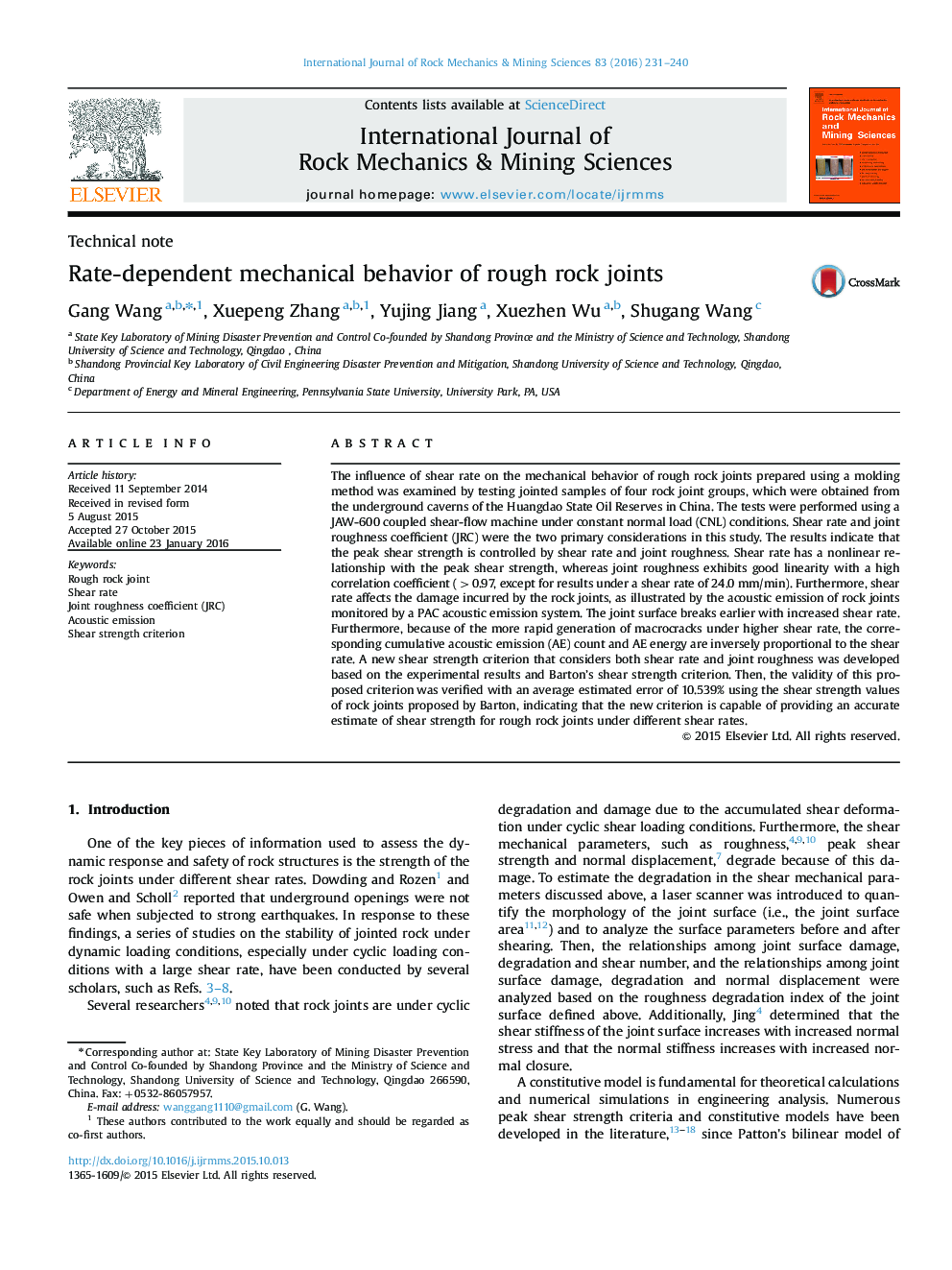| Article ID | Journal | Published Year | Pages | File Type |
|---|---|---|---|---|
| 809334 | International Journal of Rock Mechanics and Mining Sciences | 2016 | 10 Pages |
The influence of shear rate on the mechanical behavior of rough rock joints prepared using a molding method was examined by testing jointed samples of four rock joint groups, which were obtained from the underground caverns of the Huangdao State Oil Reserves in China. The tests were performed using a JAW-600 coupled shear-flow machine under constant normal load (CNL) conditions. Shear rate and joint roughness coefficient (JRC) were the two primary considerations in this study. The results indicate that the peak shear strength is controlled by shear rate and joint roughness. Shear rate has a nonlinear relationship with the peak shear strength, whereas joint roughness exhibits good linearity with a high correlation coefficient (>0.97, except for results under a shear rate of 24.0 mm/min). Furthermore, shear rate affects the damage incurred by the rock joints, as illustrated by the acoustic emission of rock joints monitored by a PAC acoustic emission system. The joint surface breaks earlier with increased shear rate. Furthermore, because of the more rapid generation of macrocracks under higher shear rate, the corresponding cumulative acoustic emission (AE) count and AE energy are inversely proportional to the shear rate. A new shear strength criterion that considers both shear rate and joint roughness was developed based on the experimental results and Barton’s shear strength criterion. Then, the validity of this proposed criterion was verified with an average estimated error of 10.539% using the shear strength values of rock joints proposed by Barton, indicating that the new criterion is capable of providing an accurate estimate of shear strength for rough rock joints under different shear rates.
